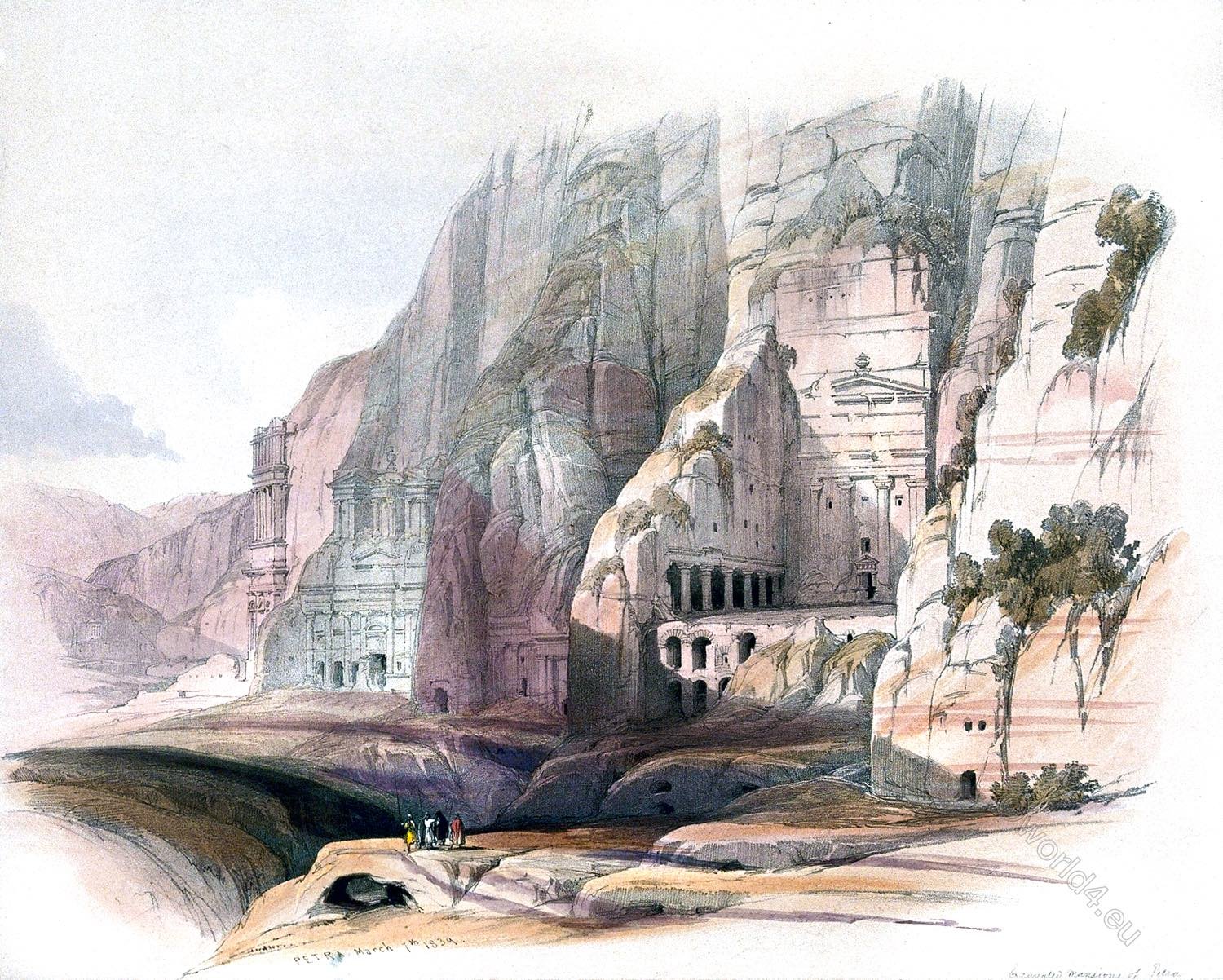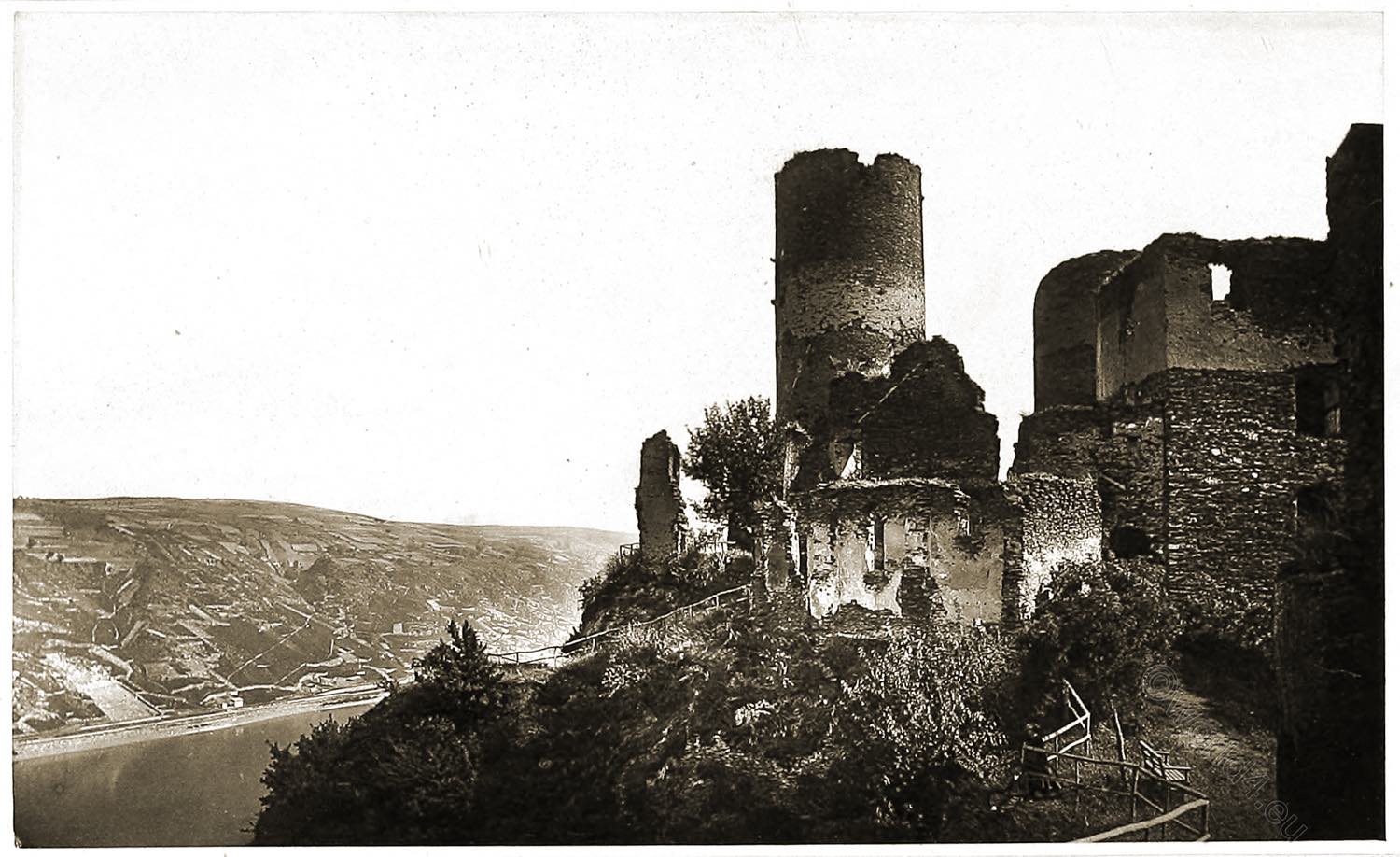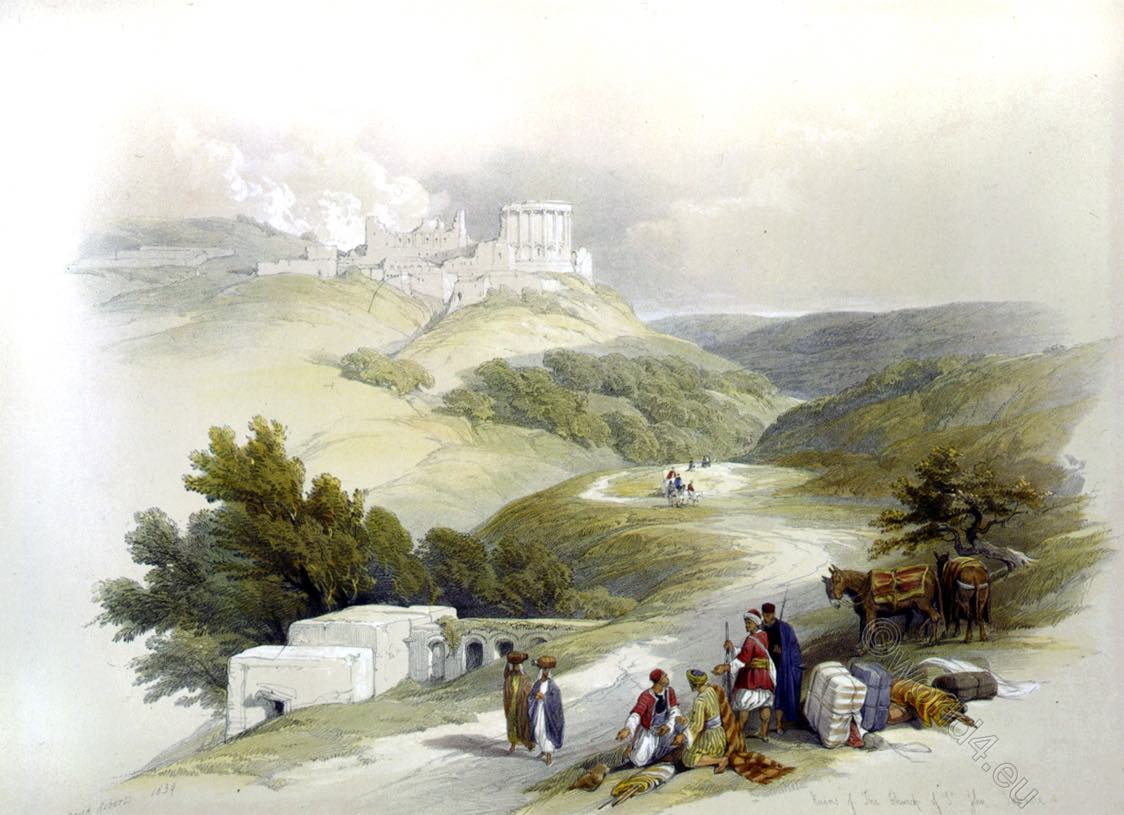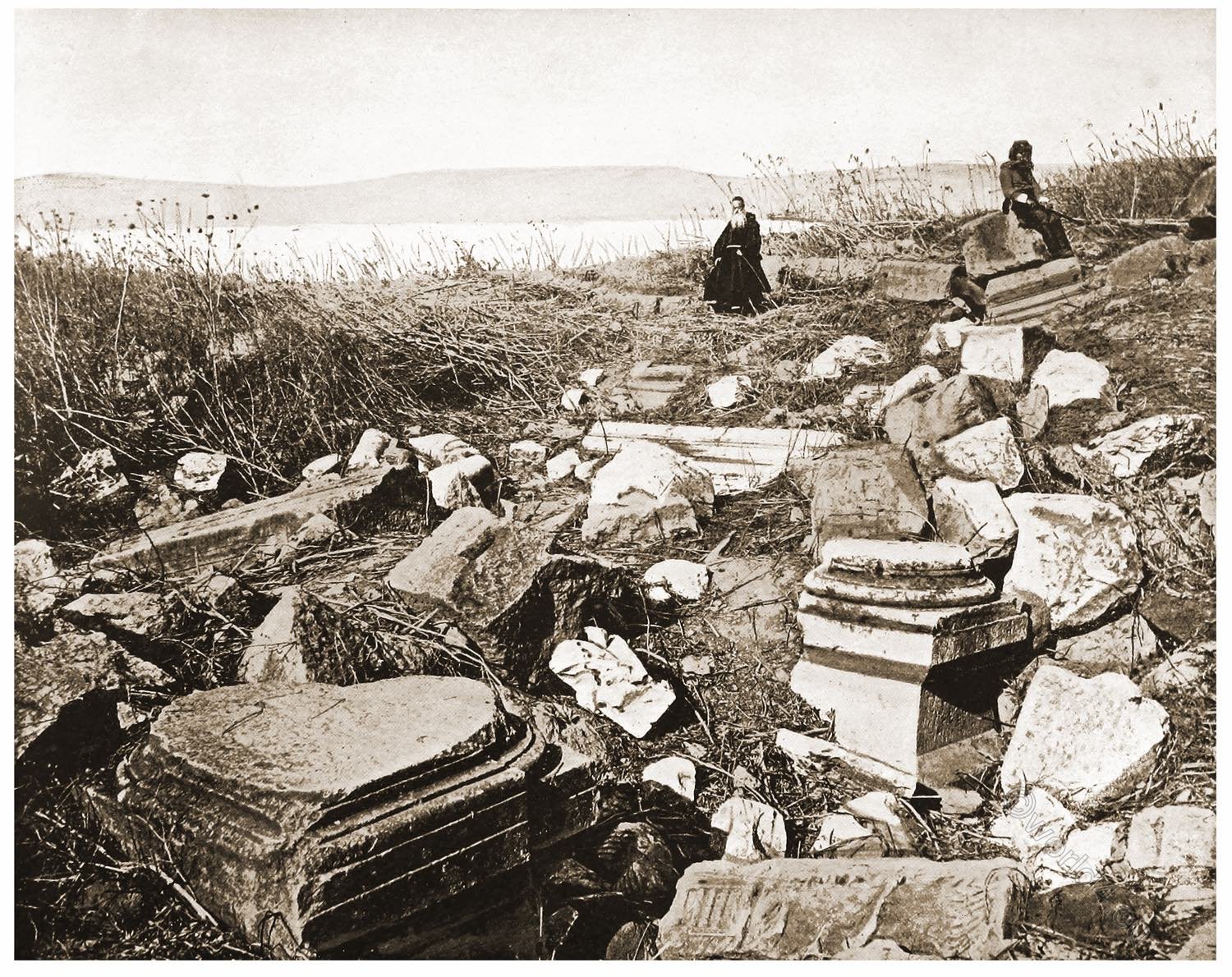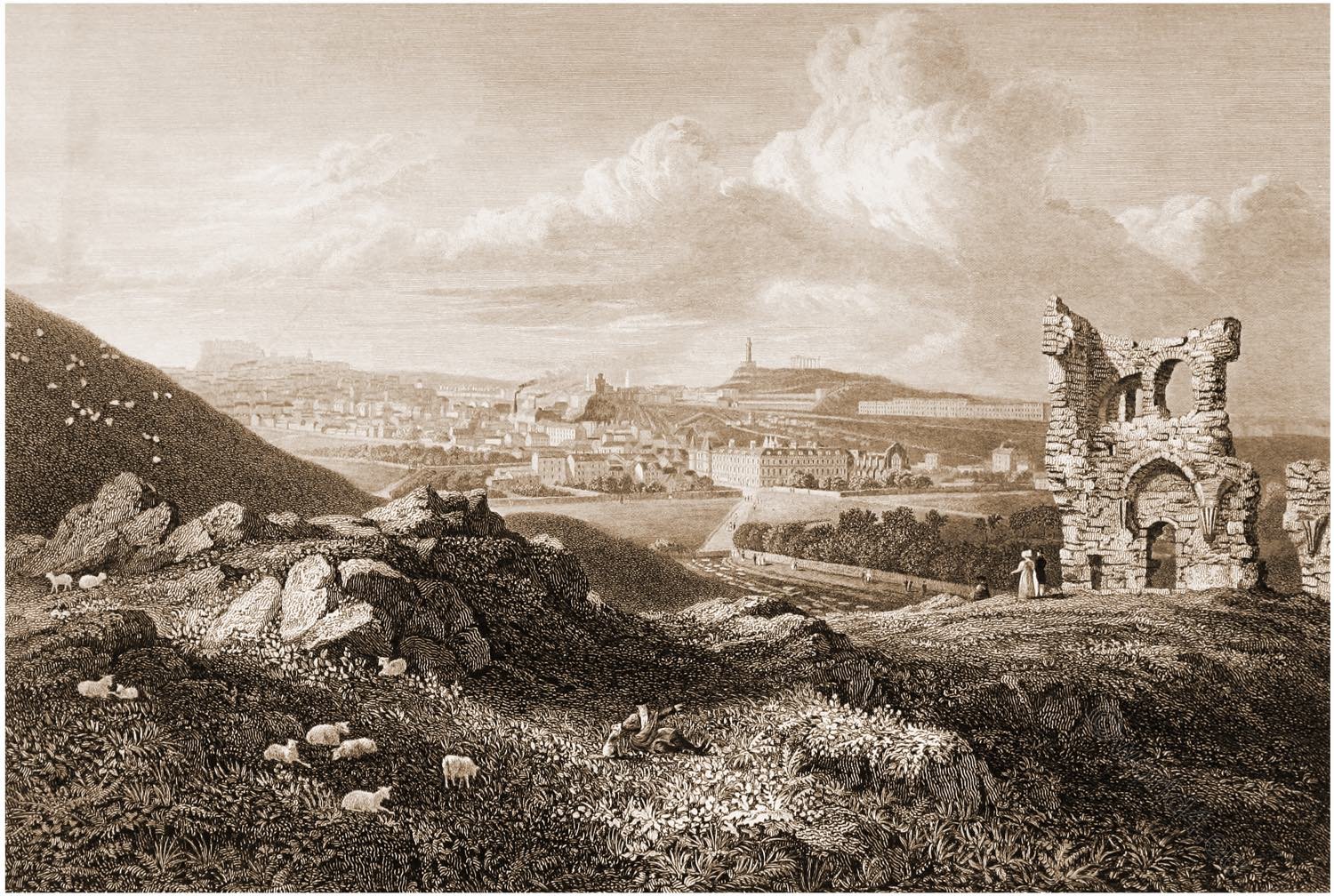
RUINS OF ORCHOMENOS IN BEOTIA.
THIS celebrated city, which in the earliest times was proverbial for its wealth 1), was founded, according to Pausanias 2), by the Thessalian Andreos, from whom it derived the name of Andreis. It was afterwards called Phlegyas, from a son of Mars, and subsequently Orchomenos, from a grandson of Neptune of that name, who was the son of Minyas.
The ancient appellation of Orchomenos has, by the modern inhabitants, been converted into that of Skripou. Its acropolis, which is here represented, stands on a steep and rocky acelivity, part of Mount Akontios, which rises to the west of the lower town, with the Cephissos winding at its southern base. The walls, which extend from the plain to the summit of the hill, enclose an irregular triangle, with the acute angle terminating at the summit of the rock, which is crowned with a large square tower regularly constructed, and approached by ninety-one steps excavated in the rock.
The three first styles 3) of early military construction are observed in the walls of the acropolis. The Tirynthian style is only seen in a few places; the well-joined polygonal is the most predominant, and the walls appear to have suffered at least two great overthrows. We know, from the testimony of Diodorus Siculus 4), that the city was destroyed by Hercules, and that it experienced a similar catastrophe in the war against the Thebans, which happened about 364 years before Christ.
The rough Tirynthian style, which is observed in the walls, was probably anterior to the time of Hercules. The acropolis was approached by three gates, one of which was at its eastern base, another in the northern side, and the third on the southern; the latter is entire, and is covered with two large blocks forming the lintel. The most celebrated edifice at Orchomenos was the treasury of Minyas, which Pausanias 5) designates as one of the wonders of Greece. It was of white marble. The entrance, which is still entire, is covered with a lintel of a single block of marble, fifteen feet four inches in length, six feet three inches in breadth, and three feet three inches in thickness.
The present view represents the southern side of the acropolis. Parnassos, covered with snow, is seen in the distance, with Daulis, Panopeus, and Chaeroneia, rising from the memorable plain in which Greece made the last great hut ineffectual struggle for her liberty and independence. The pointed mountain on the left of Parnassos is Kirphis. The river is the Cephissos, which rises at Lilae. The figures are Albanian Christians.
1) Homer. Strabo, b. 9. p. 414, who cites Homer, Iliad, 9. v. 381.
2) B. 9. c 34.
3) For different specimens of these walls see the appendix of my Tour through Greece. It is my intention to publish, in a short time, a work upon the Cyclopian and Pelasgic remains of Greece and Italy, which will contain numerous lithographical engravings by Charles Hullmandel, Esq. This work is intended to represent the extraordinary and magnificent ruins of the heroic ages, which ore little known, and have been seldom visited, particularly those of Italy.
4) B. 4. c. 10.
5) B. 9. c. 38.
Source: Views in Greece. Drawings by Edward Dodwell. Rod Well and Martin, London, 1821.
Continuing
Discover more from World4 Costume Culture History
Subscribe to get the latest posts sent to your email.

